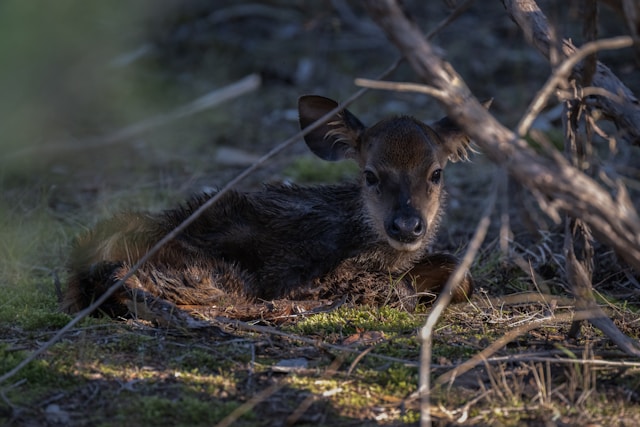Help keep young wildlife wild this spring in Colorado
Each spring Colorado welcomes an abundance of new life, including young wildlife across the state. Colorado Parks and Wildlife reminds residents and visitors that if you see young wildlife in the coming weeks and months - leave them alone. To protect these animals, it is important that people don’t feed, don’t approach and don’t harass.
Many birds and mammals give birth this time of the year. Now through June, newborn wildlife may be found in backyards, trails, open spaces and even in parking lots in rare instances.
.jpg)
Every year during spring and early summer, Colorado Parks and Wildlife receives numerous calls reporting young wildlife that has been “abandoned” by adult animals. Well-meaning animal lovers are often tempted to help a young animal by picking it up or feeding it, but these are the wrong things to do. Young animals do not need rescuing and have been prepared by nature to survive without human intervention. In fact, human intervention most often does more harm than good.
Young wildlife is frequently left alone in a safe location while adult animals go on the search for food. Young fawns and calves are left for long periods of time and are safer when they are left alone. If you come across young wildlife, do not approach them as the mother is probably nearby.
“We are asking people to be responsible and play a part in protecting Colorado’s wildlife by not touching young wildlife,” said Shannon Schaller, senior wildlife biologist for the Northeast region. "Baby mammals are scentless in order to prevent predators from finding them. When humans touch these animals they leave behind an unfamiliar scent not recognizable to the adult animals and that can cause them to become fearful. This can cause true abandonment of otherwise healthy offspring, and put the survival of that baby in question.”
.jpg) During this time of the year, it is also common for baby birds to be found outside of their nests, leading people think these birds have been abandoned. But this often happens when birds are learning how to fly. Most likely, they have landed very near their nests.
During this time of the year, it is also common for baby birds to be found outside of their nests, leading people think these birds have been abandoned. But this often happens when birds are learning how to fly. Most likely, they have landed very near their nests.
Because birds do not have a highly developed sense of smell, baby songbirds can be picked up and moved out of harm's way or placed back in their nests if absolutely necessary. The young of raptors, however, are a different story. Great-horned owls and other raptors are territorial and have been known to fly directly at humans seen as a threat to their young.
If you do encounter young wildlife on the trail or in your yard, leave the animal where it is and be careful to keep pets out of the area. Use binoculars to quietly view the animal from a distance. Do not get too close to the animals as human proximity may make the wild parents afraid to return.
 “Young wildlife has the best chance of survival when they are left in the care of their wild parents. Humans trying to assist young wildlife rarely leads to a good outcome,” said Schaller. “Wild animals are not our pets. Not only is it illegal to keep and feed most wildlife as your own, but it will also lead to a poor chance of survival if they are ever returned to the wild. Be a friend to young wildlife, and don’t touch or feed them if you come across these animals this spring.”
“Young wildlife has the best chance of survival when they are left in the care of their wild parents. Humans trying to assist young wildlife rarely leads to a good outcome,” said Schaller. “Wild animals are not our pets. Not only is it illegal to keep and feed most wildlife as your own, but it will also lead to a poor chance of survival if they are ever returned to the wild. Be a friend to young wildlife, and don’t touch or feed them if you come across these animals this spring.”
Human-raised and hand-fed animals are rarely returned to the wild due to their lack of survival skills. Licensed wildlife rehabilitators are trained to use methods that will give a wild animal the best chance of surviving upon release. CPW asks people to call their nearest office to work with these rehabilitators to ensure the best outcome for animals.
In addition to potential harm to the animal, there is a potential for harm to humans. Handling wildlife poses risks, including disease transmission of rabies, distemper or other illnesses. Wildlife can also carry fleas that might subsequently spread disease to humans or pets.
If you see young wildlife this spring, admire them from a safe distance and then move on quietly.
For more information on living with wildlife, visit http://cpw.state.co.us/learn/Pages/LivingwithWildlife.aspx
~Colorado Parks & Wildlife
Selling Your Home?
Get your home's value - our custom reports include accurate and up to date information.




